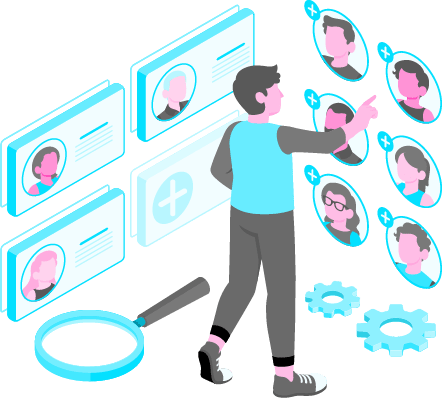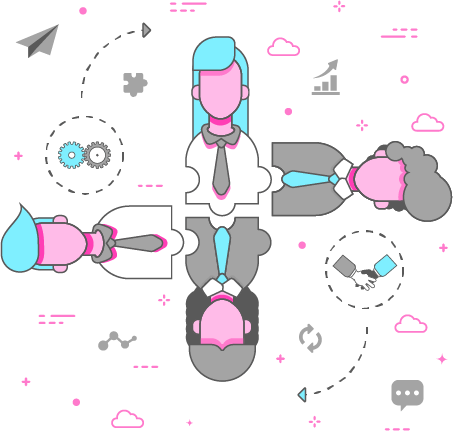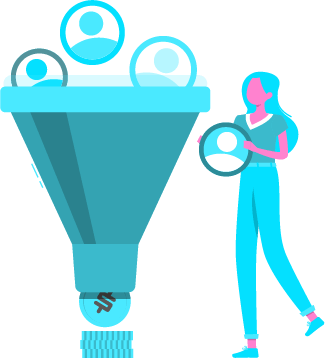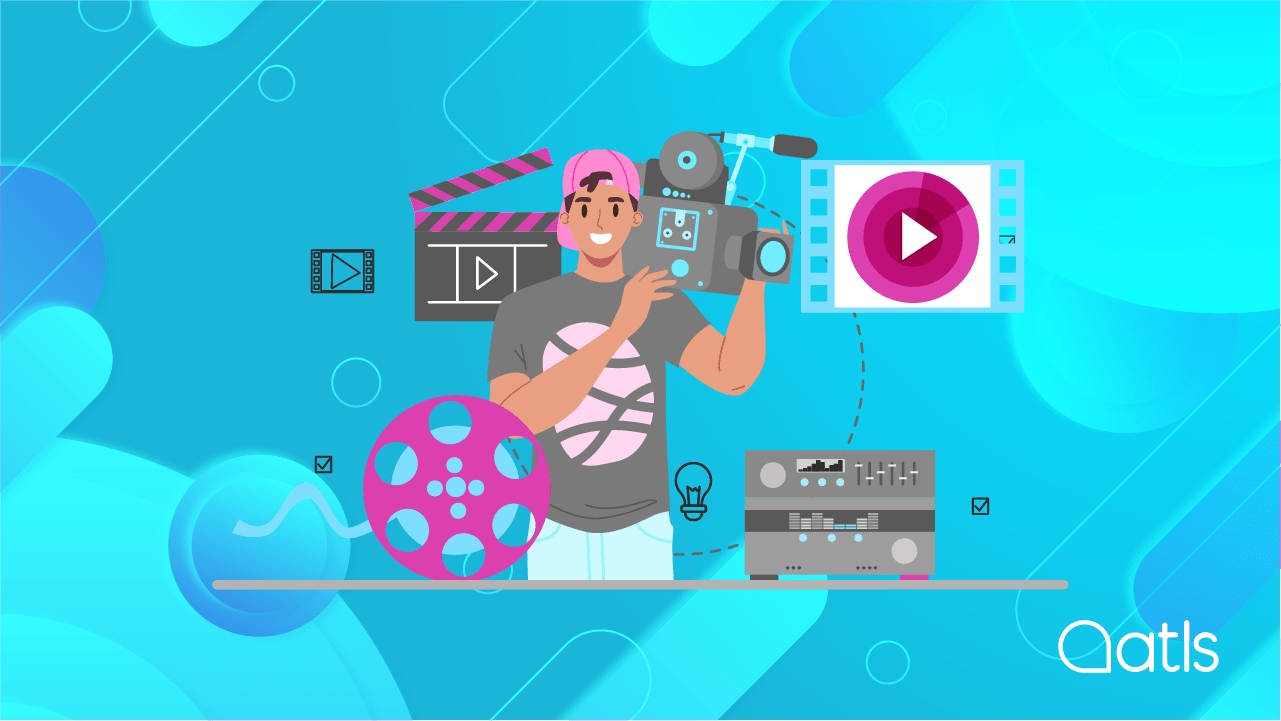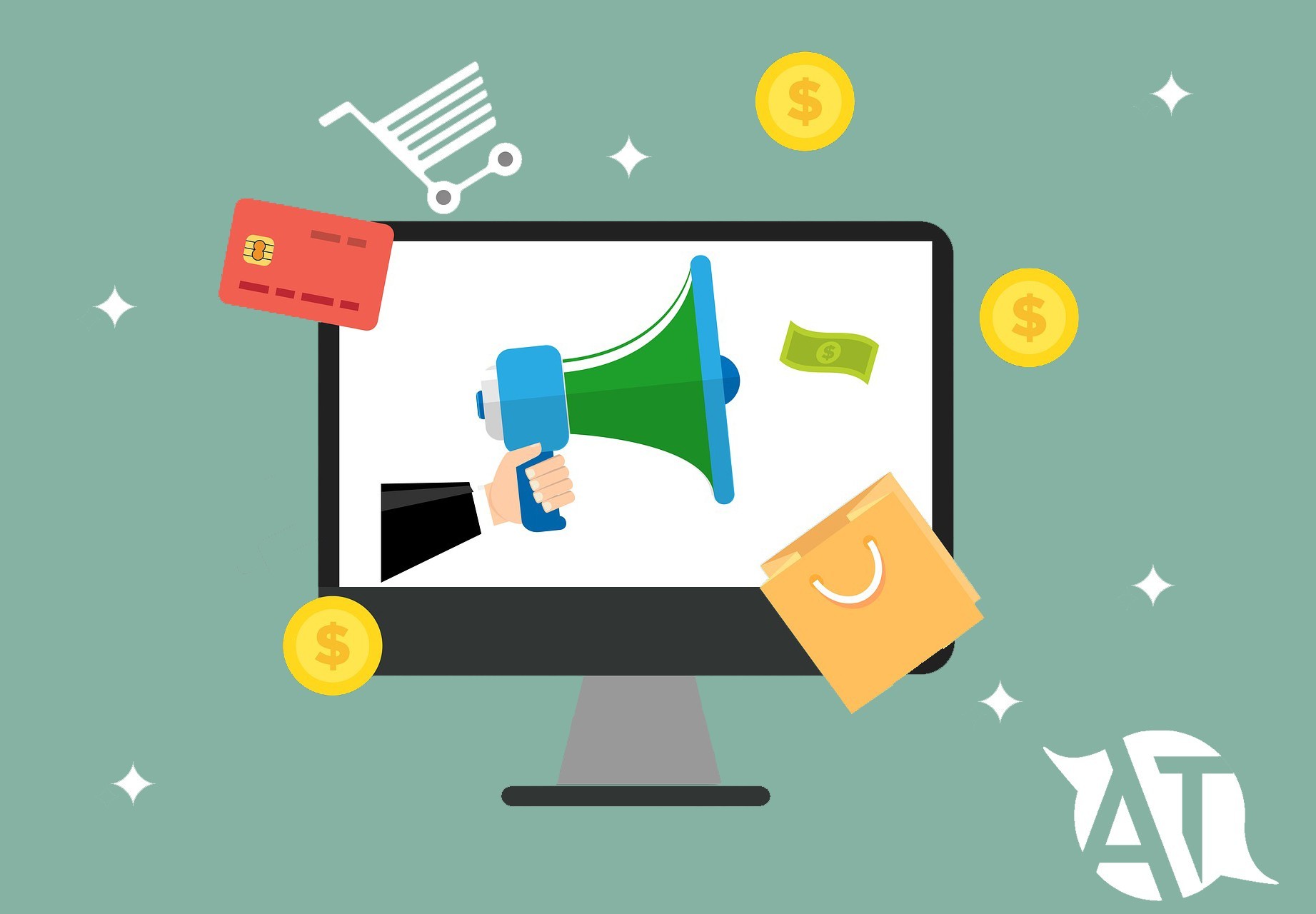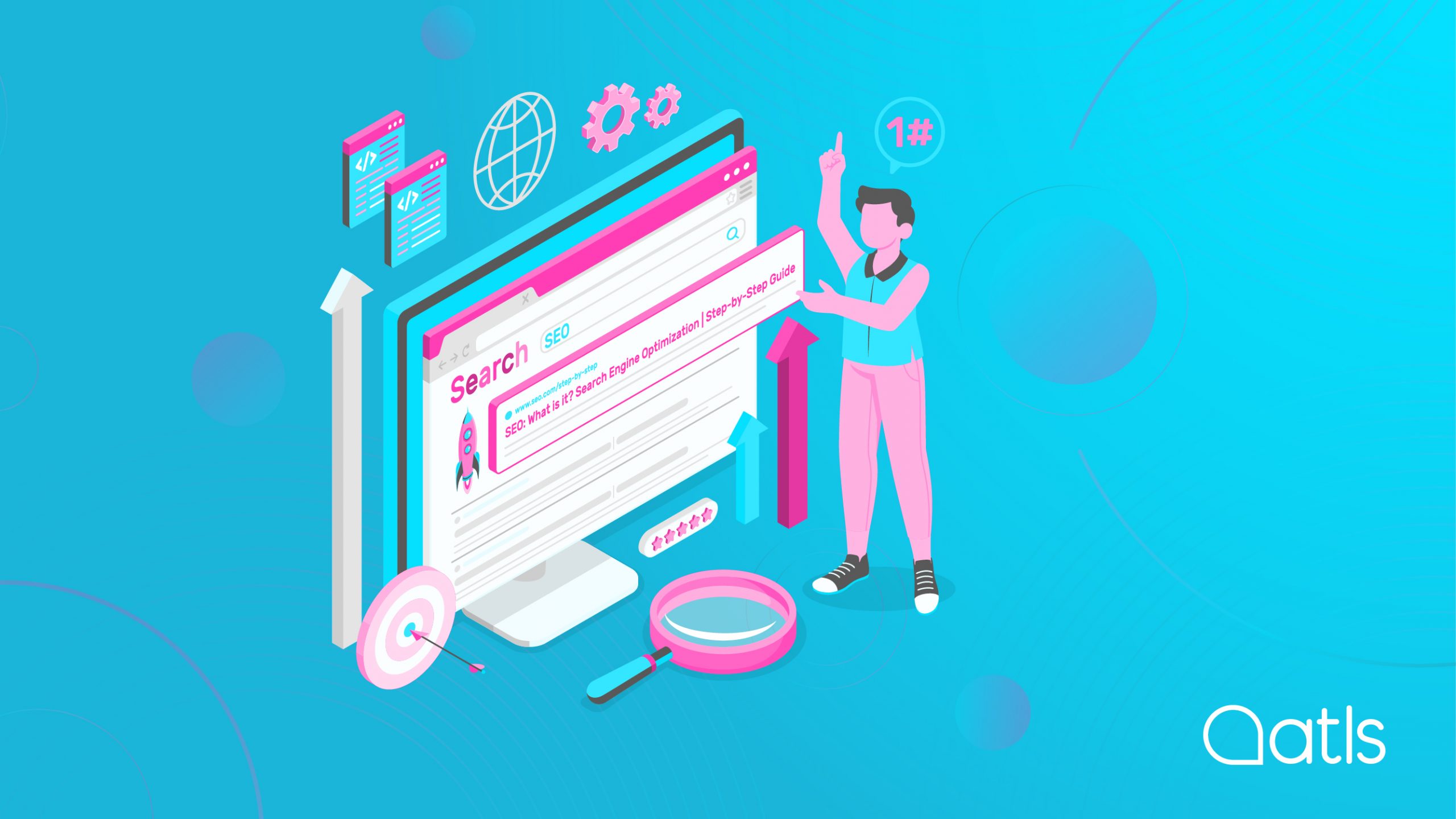How to use international marketing to achieve more leads and more sales

Generating leads - those much-coveted potential customers who have shown interest in you and given you their personal information - is both an absolute necessity and major challenge for people working in online business marketing. In this article, we'll look at some lead generation strategies and techniques to get you there, with an emphasis on the helpful input of international marketing: linguistic and cultural localisation, designing an international SEO strategy, creating multilingual content, etc. Because if you neglect your overseas market, you're neglecting a much larger potential audience than your home market.
No doubt you're reading this because you've heard all about leads, but haven't got any idea what they are... or maybe you're in the thick of internationalising your business and want to maximise your leads, beyond your own borders? It's actually much simpler than you think: what you really want is to learn how to get more customers. That's it.
Because getting leads and getting customers are both the same thing. OK, not exactly... But without leads you won't get customers, and without customers you won't get sales. So yes, what you need are conversions - from both your own market and the international market (which is where the real business opportunities lie).
In this post, we'll take a look at some clear and concise answers to these questions: What a lead is, how to generate them, and the lead generation strategies you need to make, especially in the field of international digital marketing.
What exactly is lead generation?
Let's start with explaining what lead generation is, and above all why digital marketers are so enthused by it all. To get off to a good start, the first thing you need to understand is the concept of leads, and what we mean when we talk about 'generating' them.
In marketing speak, what does lead mean?
There are several stages of the journey a customer takes from being a complete unknown to becoming an enthusiastic ambassador for your brand (with any luck). At each stage along the way, actions are implemented and the person 'transforms' (we're using a different word in an attempt to avoid confusion).
In effect, the leads are the second metamorphosis the person goes through, halfway between being a prospect and a fully fledged customer. They know us (we've already captured them, that's the first stage of the journey) but now we want to get to know them a bit more; in other words, bring them out of the no-contact zone and start up an ongoing connection.
This metamorphosis is called 'conversion'. Our lead still doesn't want to buy anything from us, but they're interested enough in our products/services to know more about us - and they're prepared to give us some of their personal information. This information comes with benefits. First of all, you can get to know them better, and second, you can use it to guide them to the next stage on the journey: their metamorphosis into a customer (through a sale).
This is the basic concept. Of course, the reality is much more complex. There are lots of types of leads (for example, B2B leads are not people, but companies), and you'll soon see which are the ones you really want - qualified leads. But let's take it slowly.
How does lead generation work?
There are lots - and we mean lots - of ways to generate leads. And all - or almost all - of them involve a rigorous analysis of the leads, offering added value and designing a well-thought-out strategy. And being agile, changing it in line with what you learn along the way.
As you can see, B2B lead generation is a complex, multifaceted task, with three key principles behind it:
- Analysis. How do you know which leads are truly interested, and how close or far away from becoming a customer they are?
- Added value. What can you offer your leads in exchange for their data and permission to communicate with them?
- Strategy. What methods and techniques will you use to offer them what they need to first convert, and then move forward?
You can summarise it with a clear concept in mind: giving people what they need to know to realise that your product/service is the answer to their needs.
How do we use international digital marketing techniques at ATLS for lead generation?
When we cross over to new borders (which we've all done already, whether we realise it or not, because the internet knows no geographical bounds), things get a little more complicated. Having an international digital marketing plan is essential if you want to make the most of the international market. And B2B lead generation is one of the most complicated parts of it.
Analyse the international market
Given that we need to find your gap in the ideal market, and work out the best way to take it by storm, this is probably the most logical starting point. Market demands vary, they're not all the same. Not all audiences react to messages in the same way. Not all business models work the same everywhere.
Understanding the peculiarities of each market (their values and principles, buying patterns and cultural aspects) is an essential part of making your entrance on the market, effective lead generation, and subsequent sales.
Analyse the competition
Looking at what others are doing is still the best way to formulate a strong strategy, achieving quality leads in a new market and establishing some guarantees of success in that market.
When we say analyse, what we mean is objectively and systematically measuring what's being done well, or not so well. And all the other things (whilst we're on the subject) they do when it comes to lead generation. You'll need specialist analytical tools to do it, backed up by support and experience from experts in the market you're targeting.
Identify your target audience
Now let's hone in on lead generation specifically. Any marketing campaign worth its salt starts here, with a definition of who you can - and want to - reach. Without it, you won't generate any leads - here or anywhere else.
If you're playing away from home, this is even more important. Getting to know your target audience is always hard, and all the more so when you speak a different language. We're not saying there's anything strange about foreign leads, but they are strangers to us; all the more reason to study them in depth.
We localise content according to the market, culture and language
Regardless of the market you're working with, achieving leads overseas involves a decent localisation of the campaign itself, as well as the messages and the audiovisual/text content it's made up of.
So, what is localisation? This task goes beyond mere translation, adapting certain parts of the content from one language to another, but also from one culture to another. If B2B lead generation involves creating a sense of trust and empathy amongst your potential customers, you need to play by their rules. And these can vary depending on the language and context.
Digital marketing techniques and strategies for generating leads
When we discuss digital marketing techniques aimed at increasing leads in a broader sense, we can all more or less agree on the same: forms (and optimising them), the importance of landing pages, publishing more content, etc. And sometimes we lose sight of the basics!
Segmenting your audience
You can segment your audience according to the demographic or socioeconomic information you have in your database, or by intention, interest or use; creating these datasets makes it easier to identify your buyer personas, and also helps you to choose the right platforms, or target your ad campaigns. And that translates into B2B lead generation.
You can use segmentation on the leads themselves, once they're qualified and you've determined their level of interest (using a technique known as scoring). That way, you'll know what different people will be interested in, and can plan highly targeted and effective actions.
Create a customer journey map
Just as you need to know who your ideal customers are, you also need to know the steps to take to convert them into actual customers. The customer journey map is an essential tool for 'warming up' your leads and turning them into qualified leads; from information qualified leads (IQL) to sales qualified leads (SQL).
This map could have a particular focus on lead generation and the shaping of your 'nurturing' process. That way, you'll know who you could offer an ebook, who might like a free webinar, or who would love a discount voucher, etc. as well as when to do it.
International SEO
A business' internationalisation strategy of course goes further than any marketing campaign, but it can't exist without it. In online businesses (which all are today), you need to devise an SEO and SEM strategy designed specifically for each market.
This doesn't mean you need to create completely different strategies for each market; rather, that ranking is equally important, wherever you are. In terms of lead generation, if you want to get the best conversion results, it's important to refine all the technical details (keywords, tags, link building) as well as quality content.
Generating multilingual content that helps your audience and is useful to them
In a purely linguistic sense, given that you'll be addressing speakers of other languages, it's better to do it in their language, right? If you think how hard B2B lead generation is - and the process of converting to the decision-making stage - imagine having to do it in another language to make yourself understood.
Let's look at just two examples, one very specific and another, much broader one. If the text on a simple CTA button is crucial in your own language, why wouldn't it be the same in Spanish, Chinese or Arabic? If we can agree that words are an essential tool when conveying your brand image, why wouldn't you use them when communicating with leads who speak German, Japanese or Portuguese?
International copywriting
The power of copywriting in getting quality leads is hard to argue with. Why? Because copywriters have the power to inspire, explain, attract, convince, seduce and persuade... And to do it, they need perfect mastery of the language, as well as the skill and experience. That's why we use native speakers to create content in other languages.
Translating and localising apps and websites
You could have a pop-up offering website visitors an attractive gift, but if the text is incomprehensible, it could well be counterproductive. This sometimes happens on poorly translated websites or apps, and it can seriously damage an otherwise healthy lead generation strategy.
Launching email marketing campaigns with promotions and new features
It's not getting there that's the problem, it's staying there. If you've already got a decent database of email addresses (which are essentially leads), an email marketing campaign is still a very effective way of staying in touch and developing a relationship with customers.
Whether you opt for a traditional newsletter - with a well-planned, automated string of emails - or any other type of campaign, emails keep the communication going, strengthening customer relationships and taking them in the direction you want to go in. Because B2B lead generation isn't the be all and end all. You need to take it to the next step.
Lead generation isn't always easy. We've worked with companies from various sectors who've approached us for help because they're either getting zero, or very few, leads per month. All these businesses have committed the same 'sin': They didn't make a 360° investment in international digital marketing. Maybe you're wondering: What does that even mean? To make your digital strategy work, you need to work on various digital areas in tandem, including: SEM, SEO, social media, UX/UI, CRM, email marketing, copywriting, etc.
Ah! Let's not forget the text: when customers ask us how they can expand into international markets, the first thing we suggest is a translation of their website content - always done by a translation professional or company with experience translating websites. At ATLS, we work in translation and international digital marketing, and our advice for getting more international leads is always the same: having high quality online content; by that we mean no spelling mistakes, a good translation and localisation based on the target market (and audience) that communicates your message loud and clear, adding value and reaching your customer on an emotional level. And this all needs to be combined with a good digital and international marketing strategy, including copywriting, SEO, SEM, social media, email marketing, UX/UI, etc. With these tools, winning leads comes guaranteed. Let's sum it up in a formula:
Strong digital marketing strategy + quality content = MORE LEADS
Can we help you increase your leads with international digital marketing?
If you've got this far, you'll have realised that international digital marketing is key to the viability of your business in the digital world: a particularly dynamic and highly competitive context. Lead generation is just one part of the equation, and an important one at that. From creating an international marketing strategy to localising your landing pages, via lead qualification, we can help with your lead generation, increasing conversions and launching your business without borders getting in the way.


